John Hurrell – 9 March, 2015
'Invisible Energy' is a richly layered exhibition that emphasises the social, how communities are intermeshed and individuals interconnected, and the violent consequences of natural disasters. It looks at family units, attendant economic anxieties and individual extravagances, and the role of fantasy and wastage. Whereas 'Mediarena' had some sensationalist ‘sicko' humour with certain animation artists, here the mood in 'Invisible Energy's' videos is at times even blacker, heavier and more chilling.
Auckland
Meiro Koizumi, Erika Kobayashi, Hiroharu Mori, Yoshinari Nishio, Nobuko Tsuchiya, Masahiro Wada
Invisible Energy
Curated by Naoko Horiuchi, Charlotte Huddleston and Vera Mey
20 February - 27 March 2015
Inspired apparently by Mediarena: contemporary art from Japan - a sprawling 23 artist show presented at the Govett-Brewster in New Plymouth in 2004, and curated by Greg Burke, Roger McDonald and Fumio Nanjo - and following its emphasis on new media, this AUT show is smaller, less lavish, and without spectacular installation. Yet if one perseveres with its quite long videos, and makes several visits, it (despite its comparative austerity) has its own rewards.
Invisible Energy is a richly layered exhibition that emphasises the social, how communities are intermeshed and individuals interconnected, and the violent consequences of natural disasters. It looks at family units, attendant economic anxieties and individual extravagances, and the role of fantasy and wastage. Whereas Mediarena had some sensationalist ‘sicko’ humour with certain animation artists (like images of crawling school girls with amputated arms and legs), here the mood in Invisible Energy‘s videos is at times even blacker, heavier and more chilling.
For example, Meiro Koizumi‘s two channel video has the same voiceover (dubbed text) on each side of a double-sided screen, accompanied by two sets of different images. One side is a continual sequence of staccato, rapid fire shots of life on crowded city streets, disjointed and disorientating. The other is of individual men and women masked in black balaclavas, describing their sexual fantasies, and answering in detail very direct questions from the artist.
The conversation focusses on the pleasures of domination or being dominated, but gets really disturbing when the discussion shifts to the pleasures of inflicting violence, like say bone breaking. One wonders how much is real, and how much is only thought, and if the later, whether such mental processes are cathartic or whether they exacerbate violence?
Vaguely related is a video by Hiroharu Mori, where a female actor recites scripts based on texts taken from a chatroom where contributors discuss their need for spending, and the perceived differentiation between frugality and indulgence. The varied enacted personalities analyse their budgeting and the fiscal breakdown within it.
Possibly the most intriguing video and installation here is by Masahiro Wada, where he films himself making a sculpture, and chatting with his observant wife and young son. They are filmed in a small lounge/playroom where a soap opera is continually playing on a television in the corner. Gravity is constantly defied when the room (a boxlike container in a drum) is rotated, and he - acquiring a monstrous fly’s head - walks on the ceiling and walls.
Maggots thriving on rotting meat are also active in the lounge so there is layered structure between the parallel presence of humans and flies. Plus liquid paint, clay and parts of a stuffed pheasant fly around the room, the laws of nature running amuck. Furthermore the conversation between the artist and his wife seems to be sometimes transposed onto the television at the back of the set, so you are never quite sure about what it is you are hearing (who is speaking?) or what you are seeing (what is really moving?). The work ponders the role of contemporary artists in Japanese society, the difficulty of survival and living a comparatively normal, balanced, domesticated life.
Yoshinari Nishio is an artist fascinated by fashion and how people relate to the clothing they place on their bodies. What motivates their choices of garment? What aspects of apparel do they consider most seriously? His art practice involves meeting strangers (men and women) on Auckland’s busy streets, starting with some casual small talk and building up to ask them to temporarily swap clothing - in order to wear it for a documentary photograph. This - as you might imagine - involves considerable charm and persuasion, as well as assessing people’s different shapes and sizes in relation to himself, figuring out what is possible and what is not. As pairs of images accumulate they are added to the St Paul St. Gallery walls in the foyer.
Writer and comic artist, Erika Kobayashi, has with Mina Tabei, designed a takeaway, fluorescent yellow poster documenting the history of radium, that is available as a stack on a glowing yellow Perspex plinth. The edition number, 1601, references the half-life years of Radium 226, and the numbers available diminish as the work gets exhibited.
On the back of the poster are vertical columns of numbers, years listed from 1900 to 3499, with all the numbers from 1902 - 2014 crossed out with yellow ink. At 3505, using the radium the great scientist Marie Curie obtained on 1902, that quantity will reach its half-life, a period that is the equivalent of 53 generations of grandchildren.
On the front side of the poster is a text written by Kobayashi about Curie, somebody she has researched in extraordinary detail. The text (about her family history intertwined with Curie’s life) is beautifully put together, describing at the beginning 1896, the year when a tsunami hit Japan, and her mother’s grandmother was three years old. Kobayashi’s absorbing writing is presented in English and Japanese.
The last artist contributing is Nobuko Tsuchiya, whose unusual sculpture of incongruous off-cuts, wool, wire, tools, instruments and sports gear can be seen on the floor of Gallery One and in the small street-front St Paul St window gallery. It is hard to determine a rationale behind the construction of this sculpture that was made in Auckland - a peculiar blend of industrial and domestic substances, but without any intense high energy modulation in texture or form to attract your eye (as you would get with say, Jessica Stockholder). It seems deliberately mentally flat, without excitement, a gesture without a vibrant material dynamic. Some of her other (online) works are a little like Paul Cullen’s, while these seem looser and more interested in reactivating detritus.
John Hurrell
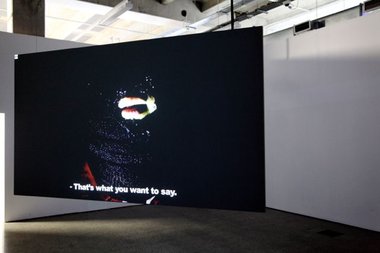
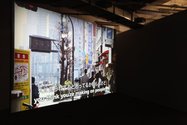
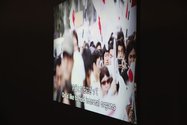
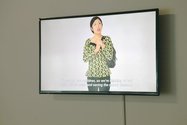
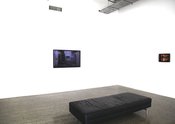
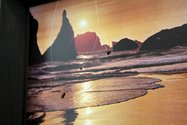
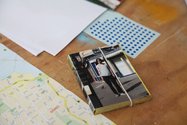
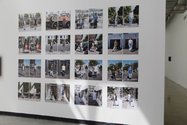
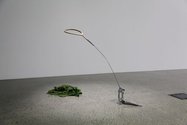
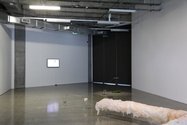
 Advertising in this column
Advertising in this column Two Rooms presents a program of residencies and projects
Two Rooms presents a program of residencies and projects



This Discussion has 0 comments.
Comment
Participate
Register to Participate.
Sign in
Sign in to an existing account.